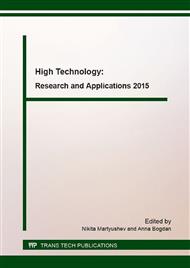[1]
M.D. Gunzburger, Perspectives in Flow Control and Optimization, SIAM, Philadelphia, (2003).
Google Scholar
[2]
G.V. Alekseev, D.A. Tereshko, Analysis and Optimization in Hydrodynamics of Viscous Fluid, Dalnauka, Vladivostok, (2008).
Google Scholar
[3]
G.V. Alekseev, Optimization in Stationary Problems of Heat and Mass Transfer and Magnetohydrodynamics, Nauchny Mir, Moscow, (2010).
Google Scholar
[4]
G.V. Alekseev, R.V. Brizitskii, Control problems for stationary magnetohydrodynamic equations of a viscous heat-conducting fluid under mixed boundary conditions, Comp. Math. Math. Phys. 45 (2005) 2049-(2065).
DOI: 10.1007/s00021-016-0253-x
Google Scholar
[5]
G.V. Alekseev, R.V. Brizitskii, Stability estimates for the solutions of control problems for the stationary magnetohydrodynamic equations, Differ. Eq. 48 (2012) 397-409.
DOI: 10.1134/s0012266112030111
Google Scholar
[6]
R. Brizitskii, D. Tereshko, Control problems for MHD equations under inhomogeneous mixed boundary conditions, Appl. Mech. Mater. 670-671 (2014) 626-629.
DOI: 10.4028/www.scientific.net/amm.670-671.626
Google Scholar
[7]
G.V. Alekseev, D.A. Tereshko, Extremum problems of boundary control for a stationary thermal convection model, Doklady Math. 81 (2010) 151-155.
DOI: 10.1134/s1064562410010412
Google Scholar
[8]
D. Yamazaki, M. Kawahara, Optimal control of temperature in fluid flow using four types of minimization techniques, J. Algor. Comp. Tech. 4 (2010) 207-230.
Google Scholar
[9]
G.V. Alekseev, D.A. Tereshko, Two-parameter extremum problems of boundary control for stationary thermal convection equations, Comp. Math. Math. Phys. 51 (2011) 1539-1557.
DOI: 10.1134/s096554251109003x
Google Scholar
[10]
R. Brizitskii, D. Tereshko, Control problems for models of thermally and electrically conductive viscous fluid, Appl. Mech. Mater. 249-250 (2013) 812-817.
DOI: 10.4028/www.scientific.net/amm.249-250.812
Google Scholar
[11]
D.A. Tereshko, Numerical reconstruction of the boundary heat flux for the stationary equations of heat convection, J. Appl. Indust. Math. 9 (2015) 132-140.
DOI: 10.1134/s1990478915010147
Google Scholar
[12]
Yu. Ya. Fershalov, Technique for physical simulation of gasodynamic processes in the turbomachine flow passages, Russ. Aeron. 55 (2012) 424-429.
DOI: 10.3103/s1068799812040186
Google Scholar
[13]
M. Yu. Fershalov, A. Yu. Fershalov, Yu. Ya. Fershalov, Calculation of reactivity degree for axial low-account turbines with small emergence angles on nozzle devices, Adv. Mater. Res. 915-916 (2014) 341-345.
DOI: 10.4028/www.scientific.net/amr.915-916.341
Google Scholar
[14]
G.V. Alekseev, V.V. Malikin, Numerical analysis of optimal boundary control problems for Navier-Stokes equations, Comp. Fluid Dynamics J. 3 (1994) 1-26.
Google Scholar


